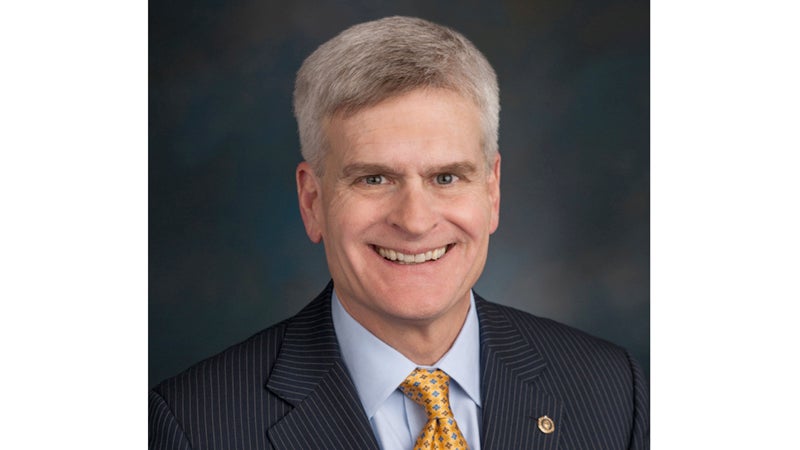Cassidy Demands Answers After FEMA Stonewalls Congress for Full Year
Published 10:34 am Thursday, November 3, 2022

- Senator Bill Cassidy
|
Getting your Trinity Audio player ready...
|
| WASHINGTON – U.S. Senator Bill Cassidy, M.D. (R-LA) today called out FEMA for its lack of transparency and its stonewalling of Congress regarding its implementation of Risk Rating 2.0. It has been over a year since Cassidy’s October 2021 request for a briefing with FEMA, on behalf of the Louisiana Congressional Delegation, to discuss the National Flood Insurance Program and the implementation of Risk Rating 2.0. As of today, FEMA has yet to fulfill this request despite repeated demands from Cassidy and other members of the delegation.
“It has now been over a year and we have yet to receive a response with a time your department would be willing to provide such a briefing,” said Dr. Cassidy. “FEMA’s plan to implement the program first and provide details later is causing havoc. It has left policyholders in the dark without the basic information they need to prepare for the future.”
“Insurance agents in Louisiana tell me that FEMA has not given them the information they need to adequately assist policyholders in navigating the changes to the program,” continued Dr. Cassidy. “This uncertainty is damaging and inexcusable. Despite years to plan the rollout of Risk Rating 2.0, FEMA is not meeting its basic obligations to serve my constituents.”
In February of 2022, FEMA finally publicly acknowledged the existence of an internal study finding that the implementation of Risk Rating 2.0 to the National Flood Insurance Program (NFIP) could cause 20% of policyholders to drop out of the program due to skyrocketing premiums. This was in response to a bipartisan, Cassidy led letter to FEMA in September of 2021 demanding a delay in Risk Rating 2.0 to prevent harm on homeowners.
Read the full letter here or below:
Dear Administrator Criswell,
In October of 2021, this office first requested a briefing with FEMA and the Louisiana delegation to discuss the National Flood Insurance Program and specifically the implementation of Risk Rating 2.0. It has now been over a year and we have yet to receive a response with a time your department would be willing to provide such a briefing.
FEMA’s plan to implement the program first and provide details later is causing havoc. It has left policyholders in the dark without the basic information they need to prepare for the future. Insurance agents in Louisiana tell me that FEMA has not given them the information they need to adequately assist policyholders in navigating the changes to the program. This uncertainty is damaging and inexcusable. Despite years to plan the rollout of Risk Rating 2.0, FEMA is not meeting its basic obligations to serve my constituents.
In the past, agents could tell policyholders how much elevating their home, or making other improvements, would reduce their flood insurance rates. This encouraged mitigation and property resilience, protected property, and ultimately saved the National Flood Insurance Program (NFIP) money.
Today, the information FEMA provides is not sufficient for this purpose. For example, the Discount Explanation Guide includes only six foundation types, none of which correspond exactly to the most common kind of foundation in South Louisiana. If you are building a new home, you need to know how high to elevate to receive a flood insurance premium you can afford. This is a serious problem for the new home construction market, as homebuilders don’t know what metrics to target. It also affects current policyholders who cannot make plans to address the coming rate hikes as they don’t know what FEMA will accept for mitigation.
In response to recent questions from Congress on the transparency of Risk Rating 2.0 rating methodology, FEMA responded with inscrutable calculation worksheets and rating factors which obfuscate instead of illuminate how flood insurance rates and premiums are calculated.
Concerned constituents are contacting my office daily in dire need of clarity FEMA is not providing.
Policyholders stand to see thousands of dollars in annual premium increases over the next several years. FEMA is quick to advertise rates will only go up by $0-$10 per month for 66% of policyholders, but has not mentioned that this is only true for the first year of the program. In future years, policyholders in this group could see the same drastic premium increases.
The lack of communication greatly diminishes any confidence in FEMA’s ability to implement this Risk Rating 2.0. If the Biden administration refuses to halt implementation of this disastrous policy, the least they can do is provide constituents with the basic information they need to navigate this new rating regime. Home builders, insurance agents and families need to know how mitigation measures can influence their potential rates. FEMA must be transparent to Congress and our constituents about the true extent of these premium increases.
We know Risk Rating 2.0 will hurt millions of Americans. Withholding the true damage that is set to befall them will only make things worse.
### |




